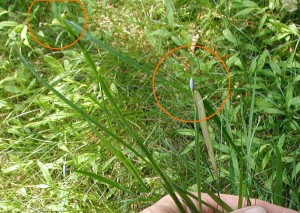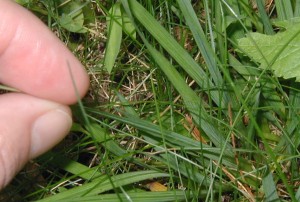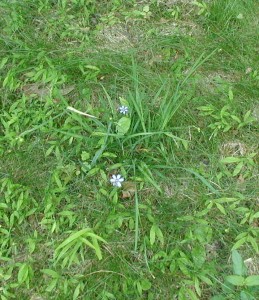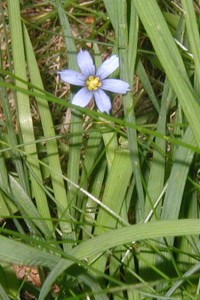One side of the lawn was allowed to grow long for the want of a mower. Before the machine was fixed the grass reached a foot high and some went to seed. The area really didn’t look that bad because of the sparseness of the grass. It is a very shady area that has a cool dampness to it. The grass that grows here is thin and different from the grass growing in sunnier spots. To my surprise there appeared a new plant in the unmowed area, Blue-Eyed Grass.

(Click on any photo to see a larger image.)
The blue-eyed grass was only noticed when a blossom had opened. There it was, this cute, light blue flower with a yellow “eye” ring and curiously pointed tips on its petals.
Blue-eyed grasses are members of the Iris family, Iridaceae. Nine or ten species native to the USA of the Sisyrinchium genus are separated according to branching of the flower stalk and the shapes of the leaves and stems.
Leaves are grass-like blades. The central rib of each leaf blade is enlarged and that is easily felt by running your fingers down the leaf.

Green seed pods develop into round balls that dangle at the tips of the flower stems.
Flowers are true to iris form with three petals and three sepals making the blossom appear to have six petals. Each “petal” has a pointed tip.


The species of blue-eyed grass here is Stout Blue-eyed Grass, S. angustifolium, also called Pointed Blue-eyed Grass, as the stems are branched, leaves are less than a quarter-inch wide, and the flower stalks are long. It’s a perennial that reaches 4-18 inches tall. According to Peterson’s Medicinal Plants Guide, blue-eyed grass leaf and root teas were once used as a laxative, to expel worms, to treat stomach-ache, and in children, to relieve diarrhea.